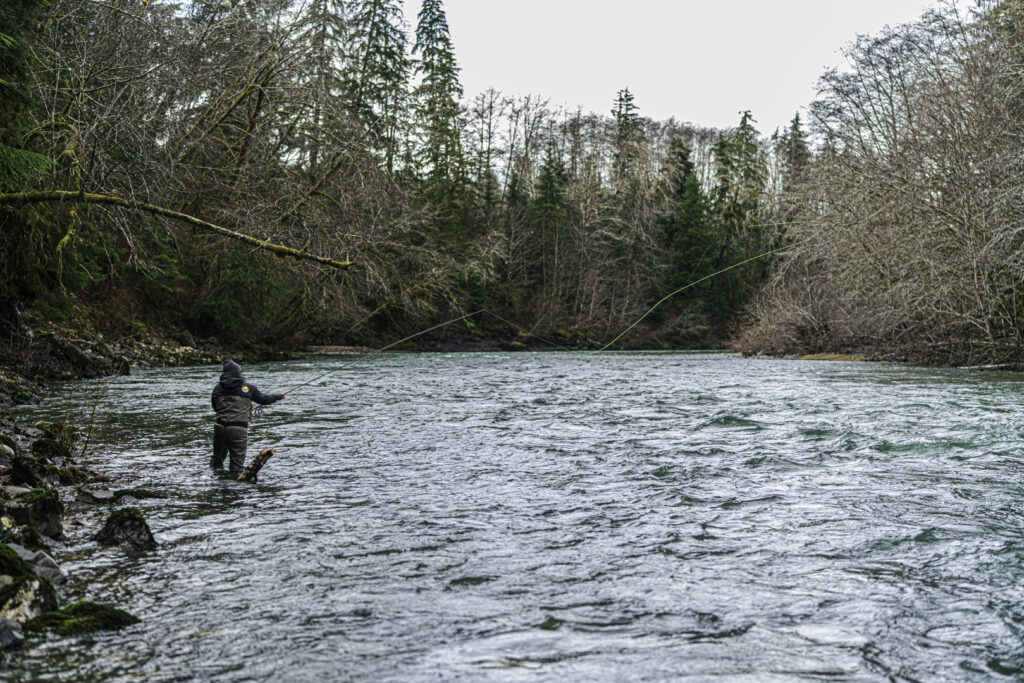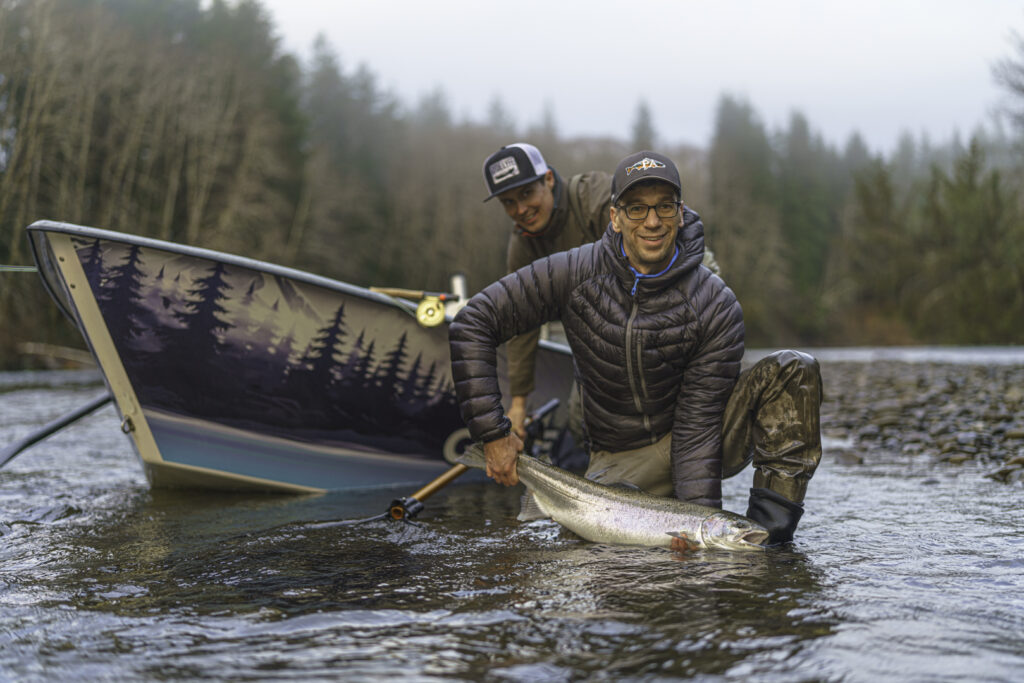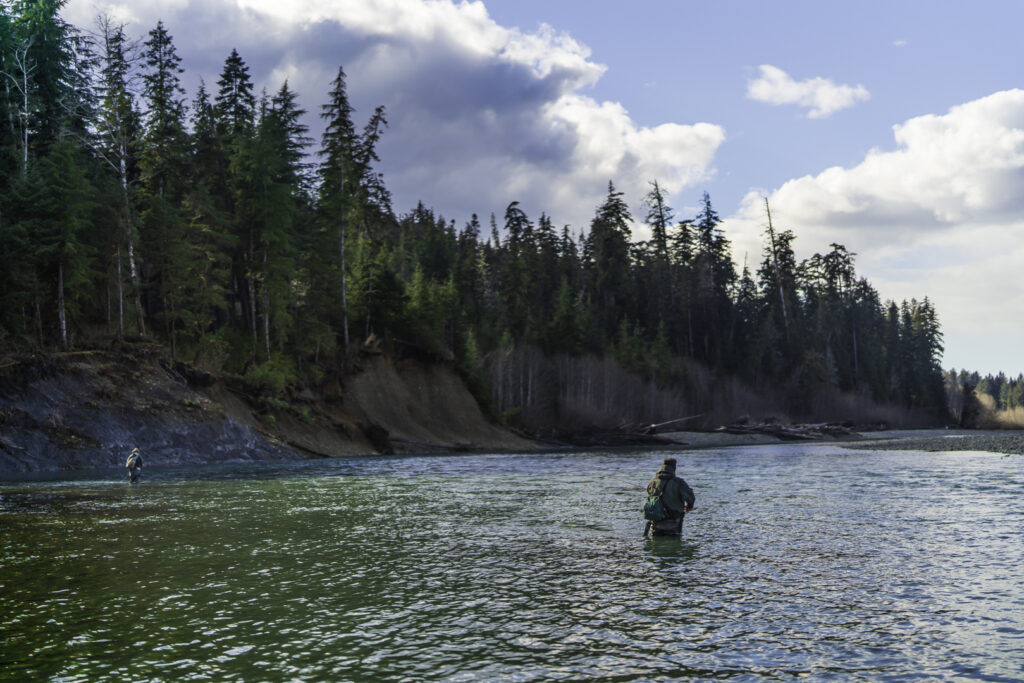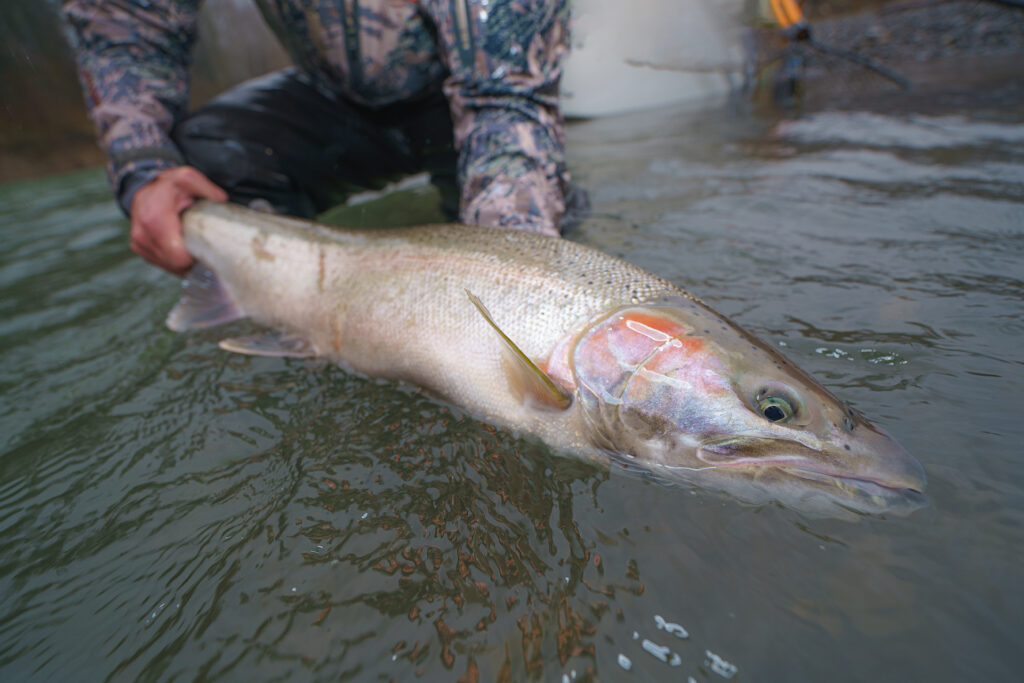Expert Advice
Finding High Water Steelhead Success
The month of January and the early part of February on the Olympic Peninsula and the Pacific Northwest in general is typically the wettest periods of rain for the region. During these times, many river systems are unfishable for weeks. Only a few short windows of high but fishable levels are available. This can be a challenging time for the beginner or intermediate steelheader. Throughout this article, I hope to provide the centerpin or spey angler with a few tips to have more success on the water.
#1 You cant catch them at home!
Learning how to notice and adapt to the differences in changing water levels and clarity takes time; the more you are on the water to see those circumstances in a real-time situation, the better. Example: If river knowledge tells you that your stream is dialed at 5,000 CFS and you only fish at or below 5k, you will never know what other levels it may fish at as well. You may be waiting for the river to go on the drop from 7k, while others are enjoying a successful day on an uncrowded river because they took a chance. To know when to go fishing and when to stay home, find out the ideal flows and try fishing when flows are 1k to 2k higher for the river you have chosen for the day. You can then make decisions on where to go based upon what you see when you drive up and get your eyes on the water.
#2. Find “NEW” water
When river levels rise, and clarity changes, steelhead that felt comfortable in a perfect seam or tailout quickly move to find cover in other places in the river and are usually on the move. Your favorite rock, a landmark for where you step into the river ankle-deep, may now be submerged and is now the “NEW” water hangout for the steelhead that will take your fly or drop your float. Knowing where to locate water like this will provide you with more fishing locations and give you an edge when flows are at their peak.
If you are an angler coming into the river on foot, be sure you’re not stepping into a run where the fish are swimming beside your knees. In high water , the fish move out to the edges so stick with short casts and out of faster water. For those with access to a boat, get ready to row, hard. High water boat positioning will define where you can fish safely, and also if you are rowing over the fish, you are trying to catch. To make this feat a bit easier on the rower, present your gear in slower water just off the left or right well in front of the boat.
#3. Plan A, B & C
On your drive to the river, make sure you have another option if your first choice looks like mud when you get your eyes on the water. Also, know which sections of the river to float. Typically the higher you go, the better the visibility gets because the river has had less time to pick up sediment from the river bottom and banks, which carry dirt further downstream. Also, moving to higher elevation could put you above the snow level, making the section of river you have chosen unaffected by the rainfall in the lower river.
#4. Clarity makes the final decision.
Fish cant eat what they can’t see, and 6 inches can often be a mile in fishing. Let me explain. If the visibility is 3 feet and your fly, jig, bead, or spoon is 3′ 6″ away from your fish, they cant see it. These are the days where you have to hit them on the head to get them to eat, and sometimes bigger or brighter is better. Size and color choices increase the chances of a fish making a move toward your gear.
What happens to your river when water levels rise? Does visibility significantly decrease in glacial rivers? Do gin-clear rivers begin to have better color, making fish feel safe and more eager to strike? Will water levels speed up the run timing, making the run’s peak come in earlier than predicted? Knowing what happens during these times on your river can pay big back big, but you’re going to have to get your Goretex Jacket soaked to find out.
Final Thoughts
Steelheading presents many challenges, and throwing in a couple of high water events makes the task even more extraordinary. With river levels up, this can be an excellent time for discovering that your river is fishable at higher levels than previously thought or a time to fill your fly box and tie leaders. Whatever the steelhead season throws at you, make sure you are prepared with the right tools to give you an encounter and a cautious eye on safety when venturing out during your window of opportunity.
-Lael Johnson
“Flygyde” Lael Johnson is one of the Olympic Peninsula’s premier steelhead guides. Whether fly, centerpin, or gear, he consistently produces trophy fish and memories for his clients. Visit his website for booking enquiries or see what he’s been up to lately on Instagram.





